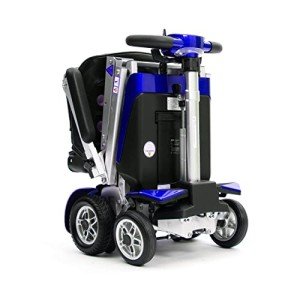What Is The Heck What Exactly Is Buying Mobility Scooter?
A Comprehensive Guide to Buying a Mobility Scooter
Mobility scooters have actually become an essential tool for many people wanting to boost their independence and mobility. With a vast range of designs and functions readily available, selecting the ideal mobility scooter can be intimidating. This post offers a helpful guide to help customers browse their options, examine their needs, and make an informed purchase.
Understanding Mobility Scooters
Mobility scooters are electric automobiles developed for people who experience mobility obstacles. They are especially helpful for seniors, those with disabilities, or people recuperating from injuries. Mobility scooters can differ commonly in regards to design, features, and prices.
Kinds Of Mobility Scooters
Before embarking on a purchase, it's important to understand the different kinds of mobility scooters available:
Three-Wheel Scooters:
- Generally more maneuverable in tight spaces
- Lightweight and portable
- Ideal for indoor usage
Four-Wheel Scooters:
- Offer greater stability and balance
- Appropriate for outside usage over numerous terrains
- Usually have a longer battery life
Foldable/Portable Scooters:
- Designed to be easily carried and kept
- Can typically fit in the trunk of an automobile
- Perfect for those who take a trip frequently
Heavy-Duty Scooters:
- Built to accommodate larger individuals
- Frequently featured more robust features for outdoor use
- Generally equipped with bigger batteries for prolonged variety
Factors to Consider When Buying a Mobility Scooter
1. Weight Capacity
Choose a mobility scooter that can support the user's weight. The majority of scooters have a weight limitation varying from 250 to 500 pounds. It is important to guarantee that the scooter can accommodate the user conveniently.
2. Range and Battery Life
The range is how far the mobility scooter can travel on a single charge. Normal ranges vary in between 10 to 30 miles. Consider the user's everyday activities and select a scooter with an appropriate variety.
3. Scooter Dimensions
Think about the size of the scooter, including its weight and measurements. A more compact scooter may be ideal for narrow corridors and tight spaces, while larger designs provide extra stability and convenience.
4. Surface Capability
Evaluate where the scooter will primarily be utilized. If the user plans to take a trip primarily on pavement, a lightweight model might be adequate. However, if the user needs to pass through gravel or irregular surfaces, think about a four-wheel scooter constructed for off-road use.
Leading Features to Look For
Comfort
- Adjustable Seats: Look for scooters with cushioned and height-adjustable seats to ensure convenience throughout travel.
- Armrests: These boost safety and support while browsing.
Safety and Visibility
- Headlights and Taillights: Essential for nighttime usage.
- Turn Signals and Reflectors: Improve exposure and security while on the road.
User-Friendly Controls
- Joystick or Drive Controls: These must be intuitive and simple to manipulate.
- Easy-to-Read Displays: A control board that shows battery life, speed, and distance can boost the user experience.
Additional Features
- Storage Compartments: These offer included benefit for carrying personal items while on the go.
- Weather condition Protection: Consider designs with rain covers or windscreens if utilized in variable weather conditions.
Expense Considerations
When budgeting for a mobility scooter, rates can vary anywhere from ₤ 500 to over ₤ 5,000 depending upon the model, features, and brand. Extra expenses may include:
- Extended Warranty: Protects versus problems and can conserve money in the long run.
- Devices: Optional features, such as updated seats, lights, or storage services.
Feature
Cost Range
Standard Models
₤ 500 – ₤ 1,500
Mid-Range Models
₤ 1,500 – ₤ 3,000
High-End Models
₤ 3,000 – ₤ 5,000
Funding Options
Lots of retailers provide funding plans, and some local government efforts may supply grants or assistance for those in requirement. Examine prospective monetary help with neighborhood resources or mobility service organizations.
FAQs about Buying a Mobility Scooter
What is the difference in between a mobility scooter and a wheelchair?
Mobility scooters are motorized and allow users to browse independently, while wheelchairs may need physical help or manual operation.
How do I keep a mobility scooter?
Regular maintenance involves inspecting battery life, cleaning up the scooter, and checking tires and brakes. Constantly refer to the user handbook for specific standards.
Can mobility scooters be used inside your home?
Yes, many designs are designed for both indoor and outdoor usage. Nevertheless, three-wheel scooters tend to be much better fit for indoor navigation due to their tighter turning radius.
Are mobility scooters covered by insurance?
Some insurance coverage plans cover a portion of the expenses for mobility scooters if they are considered medically required. Contact mobility scooters cheap for specific information.
How quick can a mobility scooter go?
A lot of mobility scooters have an optimal speed ranging from 4 to 8 mph. Nevertheless, the proper pace might differ depending on regional policies.
Acquiring a mobility scooter can significantly boost one's independence and lifestyle. By comprehending the types, functions, and costs related to mobility scooters, prospective buyers can make knowledgeable choices that fit their requirements and preferences. Personalization and extensive research are essential to guaranteeing satisfaction with this essential investment.
